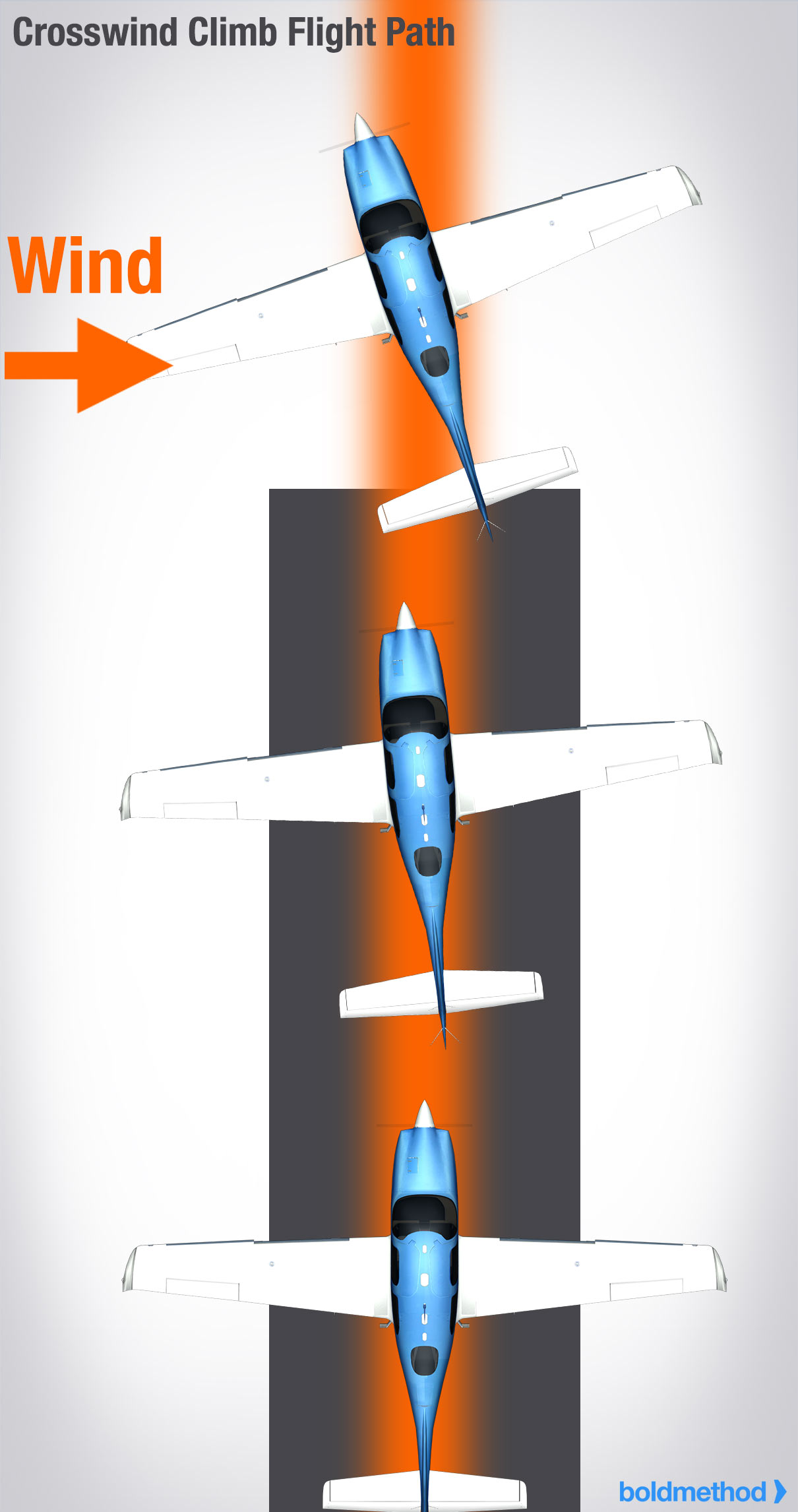By Colin Cutler
03/07/2023
Crosswind on takeoff might not seem like that big of a deal. But if you don't add in corrections, you could end up skipping down, or off, the runway. Nobody wants that to happen.
Wind correction for takeoff is a lot like wind correction for taxi: start by fully deflecting your ailerons into the wind.
Why? Without correction, your upwind wing can lift off early, and the wind can send you careening toward the edge of the runway.
Initial Takeoff Roll
When you're getting ready for takeoff, check the wind sock before you throttle up (there's at least one visible from the end of each runway at public airports).
Then, make sure your ailerons are fully deflected into the wind before you start rolling. When you look at your wings, your 'up' aileron needs to be on the same side the wind is coming from.
You also need to get ready to use rudder. If the winds are high enough, your plane will want to weathervane into the wind as you start your takeoff roll. By adding enough rudder to keep yourself pointed down the runway, you'll keep it between the white lines.
Acceleration Down The Runway
As you accelerate down the runway, your ailerons become more effective, and you'll want to slowly reduce them. After all, you don't want to dig your wingtip into the runway.
So how much do you reduce aileron deflection? Just enough to keep the airplane aligned with the runway centerline. What you'll find, at least in a moderate crosswind, is that enough aileron deflection will keep you on runway centerline. Obviously it's not all aileron, there's rudder involved too, but if you're keeping your ailerons in during takeoff, you'll keep it on the centerline as well.
You also want to keep your wings as level as possible while you're on the ground. If you don't have enough aileron deflection in, and your upwind wing lifts off first, your plane can start skipping toward the side of the runway.
Not only will you no longer be on centerline, but the amount of upwind wing exposed to the crosswind also increases. That makes it likely that your downwind wing could strike the runway, or you could go off the side of the runway. On top of that, the side-load stress on your landing gear could damage it.
Lift-Off
As you rotate and your nose wheel starts to lift off, you need to hold aileron pressure into the wind, so that the downwind wing and wheel lift off first. By doing that, you'll prevent side-skipping, and the problems that come with it.
The preferred takeoff order for a crosswind is: nosewheel first, downwind wheel second, upwind wheel third.
If you're dealing with a significant crosswind, you want to use the same method, but you'll want to hold the wheels on the ground for a little bit longer before rotating.
By staying on the runway slightly longer, at a slightly higher speed, you'll have a more quick (definite, but not aggressive) lift-off. And with quick lift-off, you'll also have more positive control of your plane as you add wind correction for the rest of your takeoff.
Initial Climb
As you lift-off, you want to slowly reduce your ailerons to keep your wings level. But at the same time, you'll notice that you immediately start drifting off the side of the runway.
Because you want to climb out on the extended centerline of the runway, you'll want to turn into the wind, finding a crab angle that keeps you flying along the extended centerline for your entire climb out.

Once you find the right amount of crab angle to prevent drifting left/right of the extended centerline of the runway, you're set to go. Sit back, relax, and enjoy the fact that you just made a perfect crosswind takeoff.







No hay comentarios:
Publicar un comentario
Espero atento tus comentarios